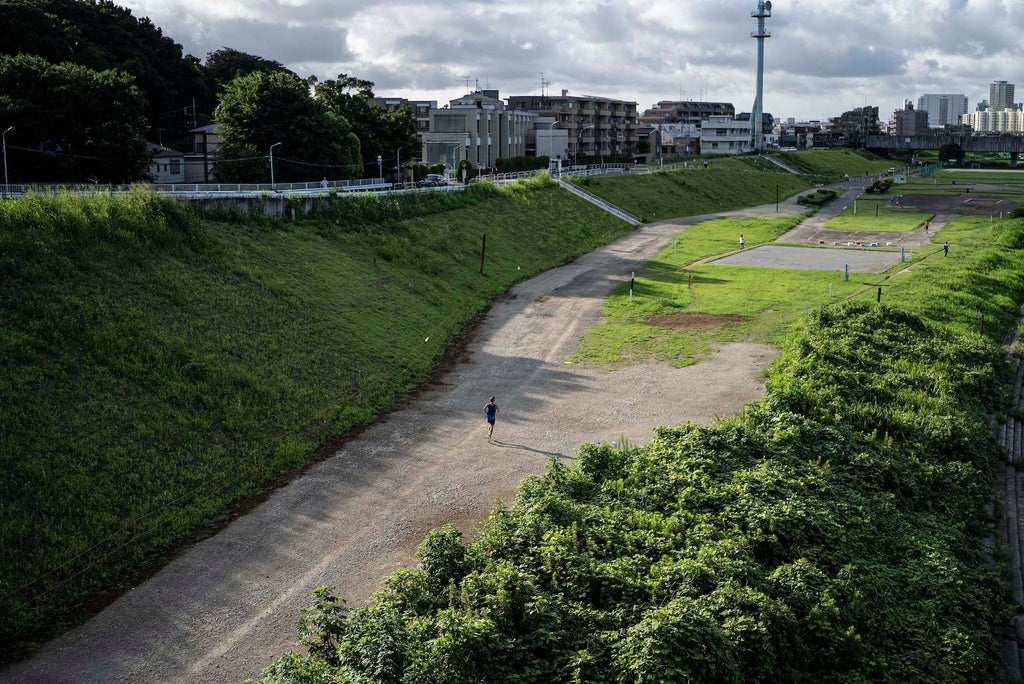厳しい環境の中でこそ“あるがまま”でいられる|齋藤帆奈(現代美術作家)
数日前に降った雪が辺りを白く染めている。八ヶ岳連峰がすぐそこに見える山梨県北杜市のとある古民家を尋ねると、気温計が氷点下を示していた。出迎えてくれたのは、バイオアート領域で活動する齋藤帆奈さん。ここは彼女が東京の自宅とは別に、昨年からアートラボとして構築し始めた第二の住まいだ。風情のある建築には手を加え過ぎず、さまざまな時代の名残を活かしながら最小限の改修に留めている。そんな様子から帆奈さんの人柄が伝わってくるようだ。



作者性を問う
「もともと植物や生物が好きで、大学の授業をきっかけにバイオアートというジャンルを知りました。分子生物学の研究者であり、美術作家の岩崎秀雄さんのラボがある研究所に貼られたポスターから、ネットワークパターンを生成する菌やバクテリアの存在を知りました。パターンの美しさが気になって岩崎さんに質問したときに、そのようなパターンを形成する典型的な生物として教えてくれたのが、粘菌を知る最初のきっかけでした」

帆奈さんがアートや研究の対象とする『粘菌』とは、キノコやカビなどを含む菌類ではなく、原生生物の一種とされている生物だ。土壌や腐植物など湿った環境に生息し、アメーバのような粘り気のある変形体や、胞子を拡散する子実体を形成する。2008年には粘菌が迷路を解決する方法についての研究がイグ・ノーベル賞を受賞したことで一躍注目を集めた。この研究は食料源を見つける際に効率的な移動パターンを選択することができるという、“粘菌の知性”の可能性を示唆する興味深い発見となった。
「あの研究が世界的に有名になった後はなかなか新しい表現が出てきていないと聞いていました。そこで私は、日本変形菌研究会の採取会に参加して、野生の粘菌を採取・培養して使うようになりました。いろんな種類を育て始めてからすごく面白くなっていったんです。バイオアーティストにとって大事なのは、自分に合った生物をひとつ見つけることなのかなと。私は粘菌を育てることが自分の生活リズムに合っているし、素材が勝手に動いてくれるというのも重要でしたね」


植物だとなかなか感じられない成長スピードも、粘菌は1時間に数センチの動きを見せる。また、氷点下にもなる部屋に放置した培養容器の中でも、数ヶ月生き続けていた粘菌は帆奈さんをモチベートしてくれた。
「向こうから私を刺激して、やる気を起こしてくれます。作品はこちらがすべてを決定するのではなく、素材の働きかけに応じるという形が私には向いているんです。“人間でないものがアートの作者になれるのか”。私の作品は素材とのコラボレーションであり、『作者性を問う』というコンセプトに繋がっているんです」
厳しい環境に身をおくこと
帆奈さんが山に入るのは、粘菌探しばかりが目的というわけではない。むしろアーティスト活動とは切り離し、登山やクライミングをしに、特別な環境を求め出かけるのだという。
「この二拠点生活もそうですが、自分が“あるがまま”でいられる状態を模索した結果なんです。東京で生活していると、自分の意思を働かせて取捨選択しなきゃいけないことが多いですが、あまり得意ではなくて。だから逆に、制約のある厳しい環境を自分に用意したほうがむしろのびのびといられるような。登山も同じ。冬の山に行くことってわざわざそんな大変なことをするなんて…と思われますよね(笑)
精神科医でクライマーでもあったヴィクトール・フランクルは、登山や自然との接触が精神の安定に良いという考えを本に書いています。彼は、都市生活では選択肢の多さが不安を引き起こす一方で、山などの厳しい状況は人間にとって目標や目的を明確にし、生きるための意味を見出すことに役立つのだというようなことを語っています。

私も自分をある程度の厳しい環境においたほうが、“あるがまま”でいられる感じがします。無限の可能性を考えちゃうと不安になりますが、山の中ではとにかく次に進むための選ぶべき行動が定まって、恐怖がなくなるんです。古民家での生活も山でのキャンプのようなところがあり似ています。都市生活は便利で可能性に満ちています。しかしそれゆえに生まれる迷いや不安も増える。可能性から創造性を引き出すには、不便な状況に定期的に自分の身を置くのが重要だと思ったのも二拠点生活を始めた理由のひとつです」
北杜の古民家ラボが育む未来
帆奈さんは、いくつもの縁が重なり決めた北杜の古民家にラボを準備している。築100年以上にもなるこの家には、明治以前のものであろう襖や昭和初期の電気系統が残っていたりと、さまざまな時代が混在している。また、古い構造により屋根や軒下には外から動物が入ってきてしまう隙間がいくつもある。不便なものにさえ愛着が湧く一方で、この季節には隙間風で部屋の寒さも厳しい。そこで、HERENESSの〈SMOOTH WOOL T-SHIRT LONG SLEEVE〉が着心地の良さと機能性の面からサポートすることを期待して、数日間着用してもらった。
「ここでは家の中でもかなり着込んで作業をするんですが、〈SMOOTH WOOL T-SHIRT LONG SLEEVE〉はとてもあたたかくて快適です。最初は通気性の良さを感じるんですが、動いている間にいつしかあたたかくなるので驚きましたね。ランニングの時にも試してみると、着心地の良さもあって、普段は5kmほどの距離が、気づいたら10km近く走っていました。緩めなデザインがパジャマとしてもいいなと思います。ずっと着ていられる万能な一着です」
HERENESSがこだわるウールのクオリティとデザインがフィットして、早速帆奈さんの日常に活かされていた。

建物からモノの歴史を感じたり、山へのアクセスを容易にして、都会の生活とバランスをとりながら“あるがまま”の時間を増やす。つまり心地良い状態が保持されることにより、帆奈さんの今後の活動はさらに充実していくのだろう。
「ずっと欲しいと思っていたラボができたので研究が捗る予定です。いまは菌類生態学の研究者と一緒に電位差を計測する実験を行い、粘菌と菌類のコミュニケーションについて共同研究しようとしています。限られた時間の中で、アートで試したことを研究の仮説にする、そんなサイクルができたらいいなと思っています」

〈着用アイテム〉
モデル身長:165cm
SMOOTH WOOL T-SHIRT LONG SLEEVE(UNISEX) Size:S
SUGARCANE LONG PANTS(WOMEN) Size:M















